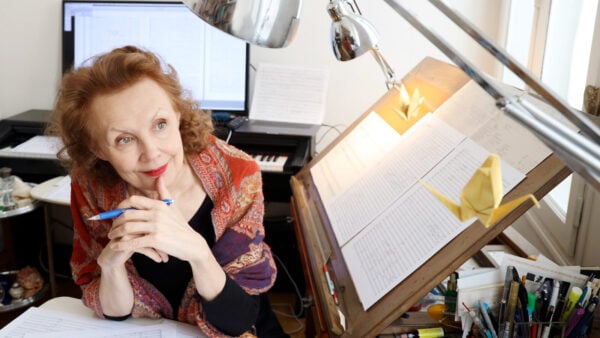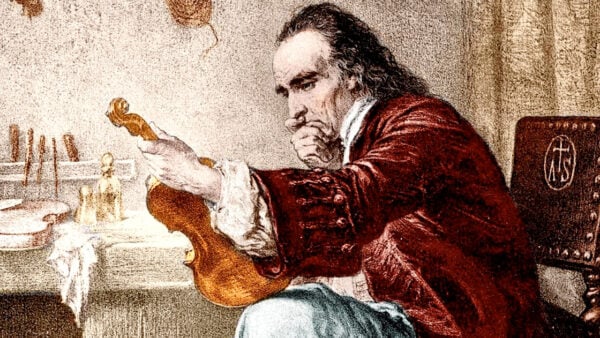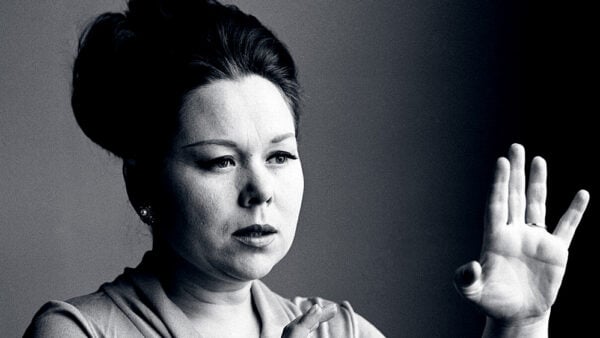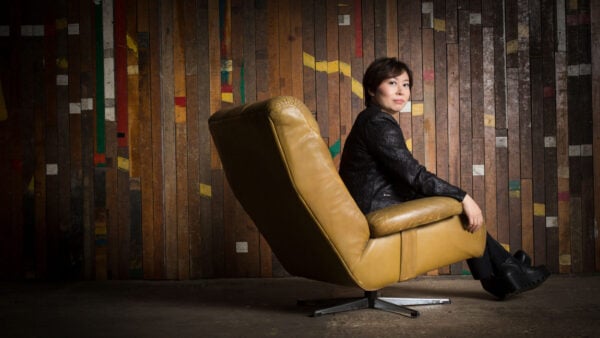 Judy Garland introduced “Somewhere Over the Rainbow” in The Wizard of Oz, and she sang it for the rest of her life. Operatic soprano Renata Scotto used it as her signature encore at solo recitals. And more recently, and very memorably, Ariana Grande sang it to end One Love Manchester, her benefit for the victims of terrorism in the British city of Manchester. It’s one of the most beloved items in the American Songbook, this evocation of a land where bluebirds fly and troubles melt like lemon drops.
Judy Garland introduced “Somewhere Over the Rainbow” in The Wizard of Oz, and she sang it for the rest of her life. Operatic soprano Renata Scotto used it as her signature encore at solo recitals. And more recently, and very memorably, Ariana Grande sang it to end One Love Manchester, her benefit for the victims of terrorism in the British city of Manchester. It’s one of the most beloved items in the American Songbook, this evocation of a land where bluebirds fly and troubles melt like lemon drops.
What is it about a rainbow that sets imaginations soaring and hopes rising? Maybe part of it is the very oddity of the phenomenon. It’s real enough: you can see it against the sky. And yet it’s also unreal: you can’t touch it, you can’t walk to it, and you certainly can’t find the end of it, unless you’re a leprechaun (another unreality). Merriam-Webster defines it thus: “an arc or circle that exhibits in concentric bands the colors of the spectrum and that is formed opposite the sun by the refraction and reflection of the sun’s rays in raindrops, spray, or mist.”
A nice, dry, dictionary description, saying nothing about the rainbow’s sheer beauty, or how it seems to connect the earth and the sky. Ancient philosophers like Aristotle studied rainbows, as did medieval Persian scholars. The Epic of Gilgamesh refers to the rainbow as the remembrance of a great flood, which brings us to a tale more familiar, that of Noah’s Ark and the great flood in the Book of Genesis. There, when the floodwaters have receded, God sends a rainbow as a promise to Noah and his family (and to the animals too, one hopes) that He would never again destroy the world by water.
Many religions have associated rainbows with their deities. In Norse mythology, Bifröst is the rainbow bridge between the lands of humankind and the abode of the gods. Richard Wagner picked up on this at the conclusion of his opera Das Rheingold, the opening of the Ring Cycle, when Wotan and the other gods cross this bridge to enter their newly-built hall called Valhalla.
In Greek mythology, Iris is the goddess of the rainbow and a messenger between earth and Olympus. Sometimes depicted as having rainbow-hued wings, she appears as a character in Homer’s Iliad and Virgil’s Aeneid. She’s particularly associated with the chief Greek goddess, Hera (Juno in Roman mythology). George Frideric Handel remembered that connection in his oratorio Semele, where the goddess Iris sings the sunny aria, “There from mortal cares retiring,” which you can hear below.
Going back for a moment to The Wizard of Oz, whose music was composed by Harold Arlen: the words to “Somewhere Over the Rainbow” and the movie’s other songs were written by E Y (“Yip”) Harburg (1896-1981), whose other credits include the lyrics to “April in Paris,” “It’s Only A Paper Moon,” and “Brother, Can You Spare A Dime.” Perhaps coincidentally, Harburg was also the lyricist for a 1940s Broadway show called Finian’s Rainbow, which brings us back to the leprechaun legend. Somehow, conman Finian has managed to steal a leprechaun’s pot of gold and makes off with it to a fictional state in the American South; he’s followed, of course, by the leprechaun, who wants his gold back but ends up falling in love with a mortal woman instead. The other part of the plot revolves around a black-white conflict in a situation of general economic hardship. The fantasy-musical has the expected happy ending: universal prosperity, and insight into achieving racial harmony through sensitivity and understanding. Helped along, perhaps, by a little Irish magic, and rainbow-inspired hope. Here’s perhaps the most famous song from Finian’s Rainbow:
In 1969, American composer Terry Riley released an LP called A Rainbow in Curved Air. Scored for electric organ, electric harpsichord, drum, and tambourine, the piece was inspired in part by jazz and the music of India, plus Riley’s own skills as a keyboard artist (via overdubbing, he plays all the instruments himself). Its haunting, enigmatic sounds have been described with that very 1960s word, “psychedelic,” though there’s no need to be high on anything to appreciate it. Many listeners have reported “hearing” colors in the electronics, perhaps accounting for the title. Here’s a portion:
Rainbow Body, a 2000 work for a traditional symphony orchestra by American composer Christopher Theofanidis, has a two-fold mystical inspiration. The composer notes his ongoing fascination with the sacred music by Hildegard of Bingen (1098-1179), saying his piece takes its principal melody from one of her chants: “(her melodies) are wonderfully sensual and set up a very intimate communication with the divine.” He also mentions one of the beliefs of Tibetan Buddhism: a “rainbow body” is created when an enlightened being dies, and the body is transformed into light: “this seemed to me to be the metaphor for Hildegard’s music as much as anything.” Here’s part of Rainbow Body:
Hope, joy, a connection to the divine: some of the things rainbows have symbolized. Another is the unity of disparate parts, and hence a sign of inclusion and diversity.
A rainbow flag was used to participants in Germany’s Peasants’ Revolt in the 16th century to represent a united front against oppression. In the 1960s, in association with Dr. Martin Luther King Jr., Chicago’s Rev Jesse Jackson launched what he first called Operation Breadbasket, which later changed its name to PUSH (People United to Save Humanity) and is now known as the Rainbow-PUSH Coalition. And in 1978, the late Gilbert Baker designed and made a rainbow flag for a gay-rights rally in San Francisco. The idea was suggested to Baker by his friend Harvey Milk. Now, the rainbow flag stands as a proud symbol of equality and pride in the LGBTQ community, here in Chicago, around the country, around the world.
Keen observers will notice a difference between the rainbow flag and nature’s rainbow, which has seven color stripes, while the flag has only six (omitting indigo). In Philadelphia, members of the LGBTQ community have expanded the number of colors presented in the current pride flag from six to eight. Brown and black stripes added give representation to people of color who have been marginalized within queer communities.
The rainbow is one beautiful phenomenon with many meanings. The verse to the song we started with says: “When all the world is a hopeless jumble/And the raindrops tumble all around/Heaven opens a magic lane. When all the clouds darken up the skyway/There’s a rainbow highway to be found/Leading from your windowpane/To a place behind the sun/Just a step beyond the rain.” And here’s Judy Garland.






